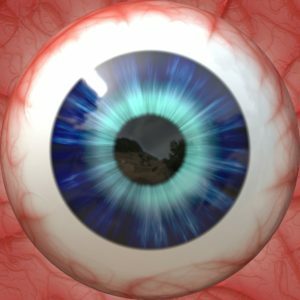November isn’t just the right time to rake leaves or plan your Thanksgiving festivities: It’s also Diabetic Eye Disease Awareness Month and a perfect time to think about how your diabetes and your eyesight go hand in hand.
Diabetic retinopathy is the most common form of diabetic eye disease and the leading cause of blindness in working-age adults. So how can you stay a step ahead of diabetic retinopathy and protect your vision if you have diabetes?
Besides managing your diabetes and your blood sugar levels, working with your optometrist to detect the early stages of diabetic eye diseases is the best way to prevent vision loss and other issues associated with diabetic retinopathy.
What is Diabetic Retinopathy?
Diabetic retinopathy affects many people with diabetes to varying degrees. When blood sugar levels rise, this causes damage to the blood vessels in the retina. This damage manifests itself in the form of swelling and leaking, which can create scar tissue and impede vision, either temporarily or permanently, depending on the severity of the retinopathy.
Diabetic retinopathy is divided into two main stages, early and later. Over time, the effects can wear progressively on the eyes, causing more permanent damage.
Let’s take a look at each of these stages and how, if left unchecked, diabetes-related retinopathy can become a serious problem:
Early Stages – Non-Proliferative Diabetic Retinopathy (NPDR): This is the earlier, less-developed stage of diabetic retinopathy. Many people with diabetes also have NPDR. With NPDR, the tiny vessels in the eye leak, causing the macula to swell, which can cause a loss of vision. Blood vessels become constricted and can close off partially or even entirely. If you have NPDR, your vision may be blurry at times.
Later Stages – Proliferative Diabetic Retinopathy (PDR): This is when diabetic retinopathy advances to a more progressed state. Because vessels have closed off, newer and weaker blood vessels grow, (referred to as neovascularization), which can contribute to permanent vision loss.
In PDR cases, these fragile blood vessels that have just started to grow can leak and bleed. A little bit of bleeding might show up as “floaters,” but more extensive bleeding can potentially block part of all of your vision. In addition, the new blood vessels also begin to form scar tissue, which can cause problems with the macula and even lead to a detached retina.
Ultimately, PDR is very serious. It can culminate in a loss of your peripheral vision, your central vision or even both, leaving you completely blind. This is why early detection and knowing the early signs and stages of diabetic retinopathy are very important.
Later Signs of Diabetic Retinopathy
The beginning stages of diabetic retinopathy present very few symptoms, if any at all. You can certainly have diabetes-related retinopathy and not notice.
In fact, most people living with diabetes have some degree of diabetic retinopathy, although nearly half of those don’t know they have the disease. However, as the NPDR stage progresses, you may start to see more symptoms, including:
- Observing more floaters in your vision
- Having blurry vision
- Fluctuations in vision between blurry and clear
- Seeing blank or dark areas in your field of vision
- Having poor night vision
- Experiencing faded or washed-out colors or lessened intensity of colors
- Loss of central vision
- Loss of peripheral vision
Preventing Diabetic Retinopathy
So how can you prevent diabetic retinopathy from progressing beyond the early stages? There are steps you can take that make a difference,including:
- Keep your blood sugar levels in check.
- Maintain a healthy lifestyle, including a healthy diet and exercise regimen and losing weight if you need to.
- Quit smoking and limit alcohol.
- Maintain a low blood pressure level.
- Prevent high cholesterol or work with your doctor to moderate high cholesterol with medication if necessary.
Treating Diabetes-Related Retinopathy
If you have early diabetic retinopathy, your eye doctor will discuss treatments and lifestyle choices that can minimize damage to your vision. However, when retinopathy becomes more advanced, you may need more advanced treatments.
Even with treatment, it’s vital that you get regular comprehensive eye exams with your optometrist to check for any evidence or progression of diabetic retinopathy to monitor your ocular health from year to year.
Diabetes doesn’t have to mean a loss of eyesight. With regular check-ups with your optometrist and active prevention, you can keep diabetic eye diseases like diabetic retinopathy, cataracts and glaucoma at bay.
There’s no better time to take control of your ocular health than during Diabetic Eye Disease Awareness Month, so you can have a full, healthy, happy lifestyle with the best vision possible.
At Harden Valley Eyecare, we are passionate about the health of your eyes and about preventing and treating diabetic retinopathy. Our eye care professionals are dedicated to providing exceptional personal service to each and every person who walks through our door. Stop by our practice at 10904 Spring Bluff Way off Hardin Valley Road, call us at (865) 409-1253, or contact us to schedule an appointment.





